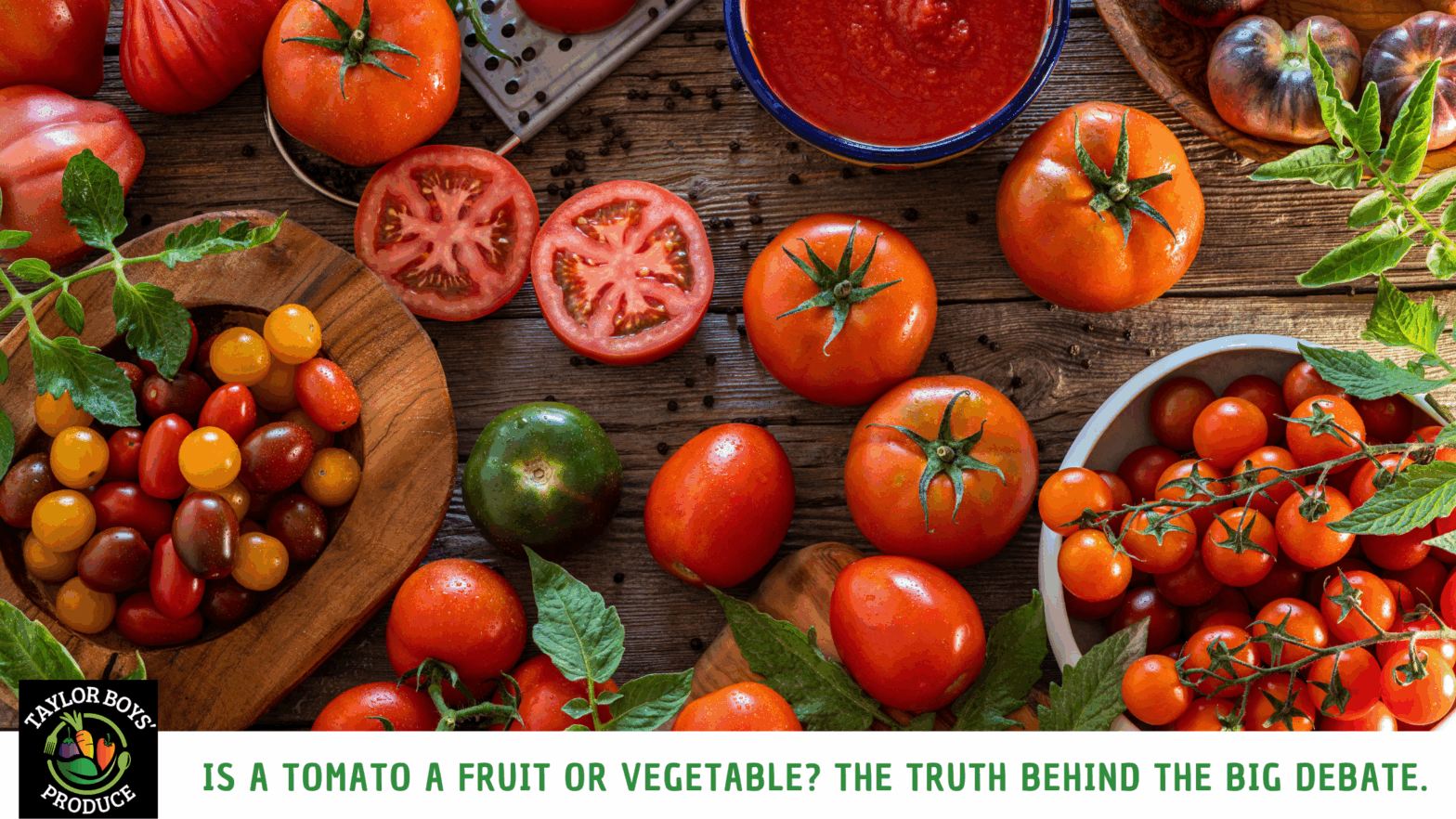Tomatoes. They’re in your salads, sauces, and sometimes even in your desserts. But have you ever stopped to wonder, is a tomato a fruit or a vegetable? It’s a debate that has stumped gardeners, chefs, and even the U.S. Supreme Court for centuries! This blog post dives into the science, history, and health benefits of tomatoes, so you’ll have the ultimate answer the next time someone asks, “Fruit or vegetable?”
What Makes Something a Fruit? The Botanical Definition
To understand this debate, we first need to know how plants are classified. Botanically, a fruit is defined as the mature ovary of a flowering plant, usually containing seeds. Examples include apples, oranges, cucumbers, and yes, tomatoes.
This means that technically speaking, any food item that develops from the flower of a plant and contains seeds is a fruit—even unconventional ones like pumpkins, eggplants, and zucchinis!
Simply put:
- Botanical fruit = Grows from the ovary of a flower + contains seeds.
By this definition, tomatoes are scientifically fruits.
What Makes Something a Vegetable? The Culinary Definition
While science has its classifications, the kitchen has entirely different rules. From a culinary standpoint, vegetables are defined based on their usage in savory dishes. This includes the edible parts of plants like roots (carrots), stems (celery), leaves (lettuce), and yes, fruits that are treated more as vegetables in the kitchen (tomatoes, cucumbers).
Tomatoes are commonly cooked into sauces, used in soups, or chopped raw in salads. Their role in savory dishes solidifies their “vegetable” status in most people’s minds.
Simply put:
- Culinary vegetable = Served as part of savory meals.
And here lies the divide between science and cooking.
The Tomato Debate Goes to Court
Believe it or not, the fruit-or-vegetable debate escalated all the way to the U.S. Supreme Court in 1893 through the famous case Nix v. Hedden. Here’s the backstory:
- The problem: At the time, the U.S. imposed a tariff on imported vegetables—but not on fruits. A produce importer, John Nix, argued that tomatoes were fruits and, therefore, exempt from the tariff.
- The ruling: The Supreme Court unanimously ruled that tomatoes should be classified as vegetables for tariff purposes. The court based its decision on common usage, stating that tomatoes are typically used in savory contexts, like salads and soups, rather than desserts.
Important quote from the ruling:
“Botanically speaking, tomatoes are the fruit of a vine… but in the common language of the people… they are vegetables.”
The verdict? For legal purposes, tomatoes = vegetables. But scientifically, they remain fruits.
Top Health Benefits of Tomatoes
Regardless of whether you call a tomato a fruit or a vegetable, one thing is certain—tomatoes are incredibly nutritious! Here are some of their standout health benefits:
1. Packed with Antioxidants
Tomatoes are rich in lycopene, a powerful antioxidant responsible for their vibrant red color. Lycopene is known to:
- Reduce the risk of certain cancers, including prostate and breast cancer.
- Combat oxidative stress and inflammation.
- Protect against UV-related skin damage.
2. Promotes Heart Health
With a combination of vitamin C, potassium, and lycopene, tomatoes contribute to better cardiovascular health by:
- Lowering blood pressure.
- Improving cholesterol levels.
- Reducing the risk of heart disease.
3. Supports Eye Health
Tomatoes are an excellent source of lutein, zeaxanthin, and vitamin A, which:
- Enhance night vision.
- Protect against macular degeneration.
- Defend against blue light damage from screens.
4. Helps with Skin Care
The lycopene and vitamin C in tomatoes improve skin health by:
- Reducing sunburn damage.
- Stimulating collagen production for firmer, youthful skin.
5. Boosts Digestive Health
Tomatoes are high in water and fiber, which help:
- Maintain regular bowel movements.
- Support a balanced gut microbiome.
6. Anti-Inflammatory Effects
Thanks to their flavonoids and carotenoids, tomatoes can reduce inflammation, making them beneficial for managing conditions like arthritis or metabolic syndrome.
7. A Weight-Friendly Food
Low in calories and rich in flavor, tomatoes are perfect for:
- Adding bulk to meals without adding weight.
- Providing satiety with minimal calories.
Bonus Tip:
Cooking tomatoes in dishes like pasta sauce or roasting them increases the bioavailability of lycopene, making cooked tomatoes even healthier than raw ones in some cases.
Final Thoughts on Tomatoes
Whether you consider tomatoes a fruit or a vegetable might depend on whether you’re in a garden, a kitchen, or even a courtroom. Botanically speaking, they’re fruits. Culturally and culinarily, they’re treated as vegetables. Regardless of their classification, tomatoes are nutritional powerhouses worth adding to your daily diet.
What’s your favorite way to enjoy tomatoes? Raw in salads, cooked into marinara sauce, or blended into refreshing gazpacho?
For the freshest, ripest, and locally sourced tomatoes, taste the difference with Taylor Boys’ Produce. Order today and elevate your tomato game.



